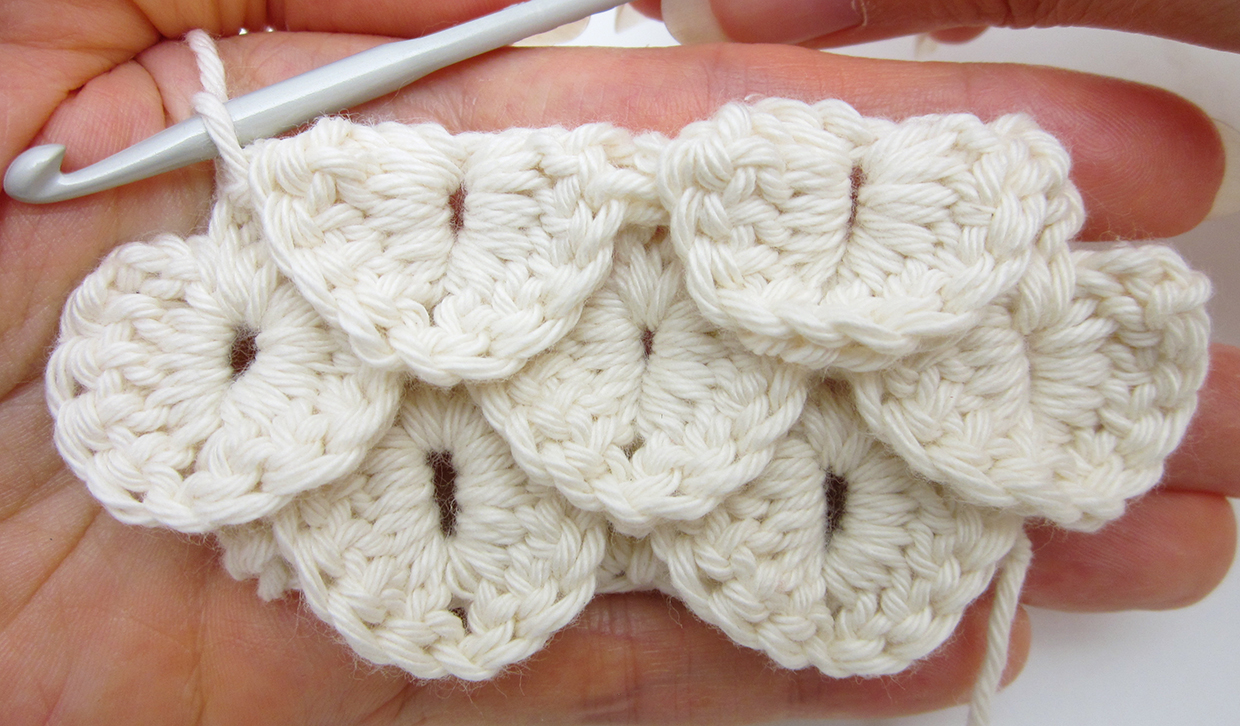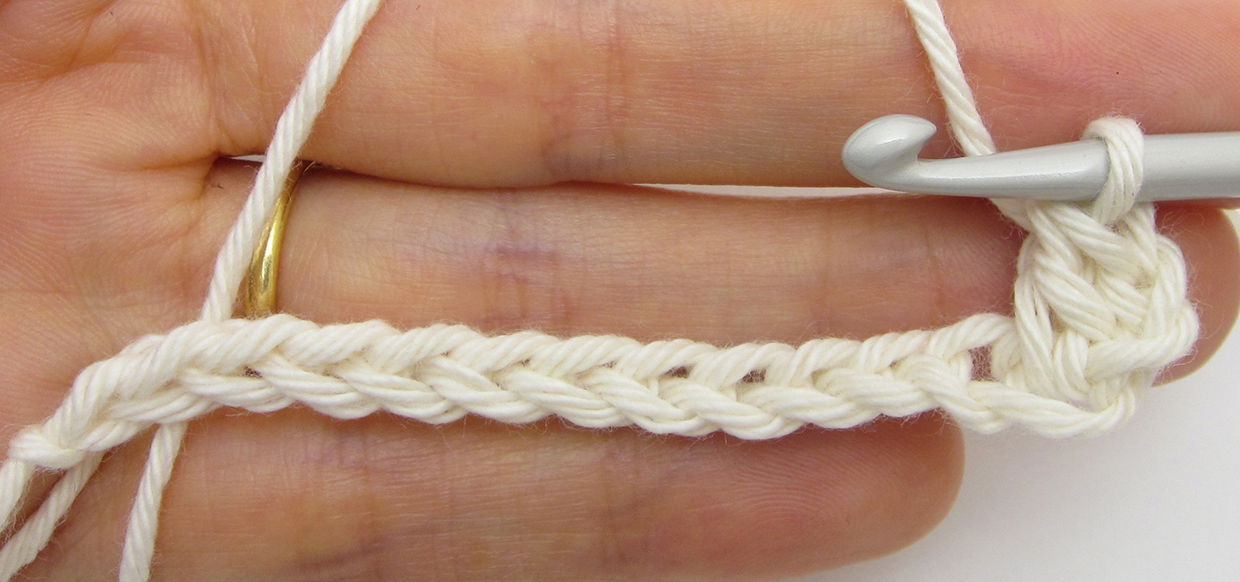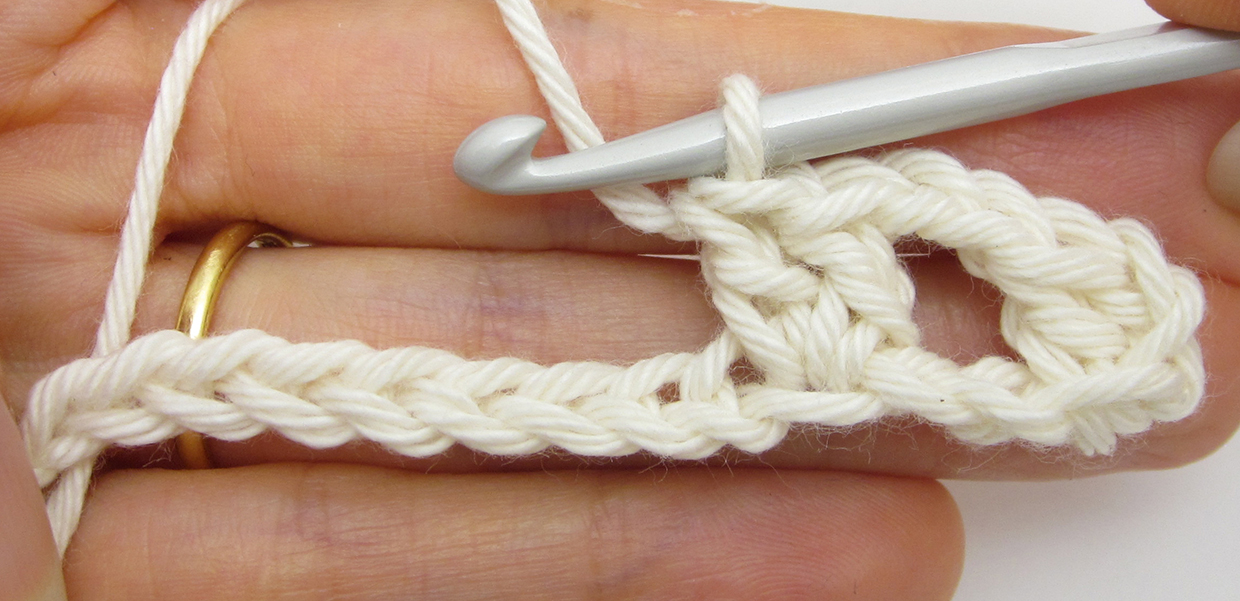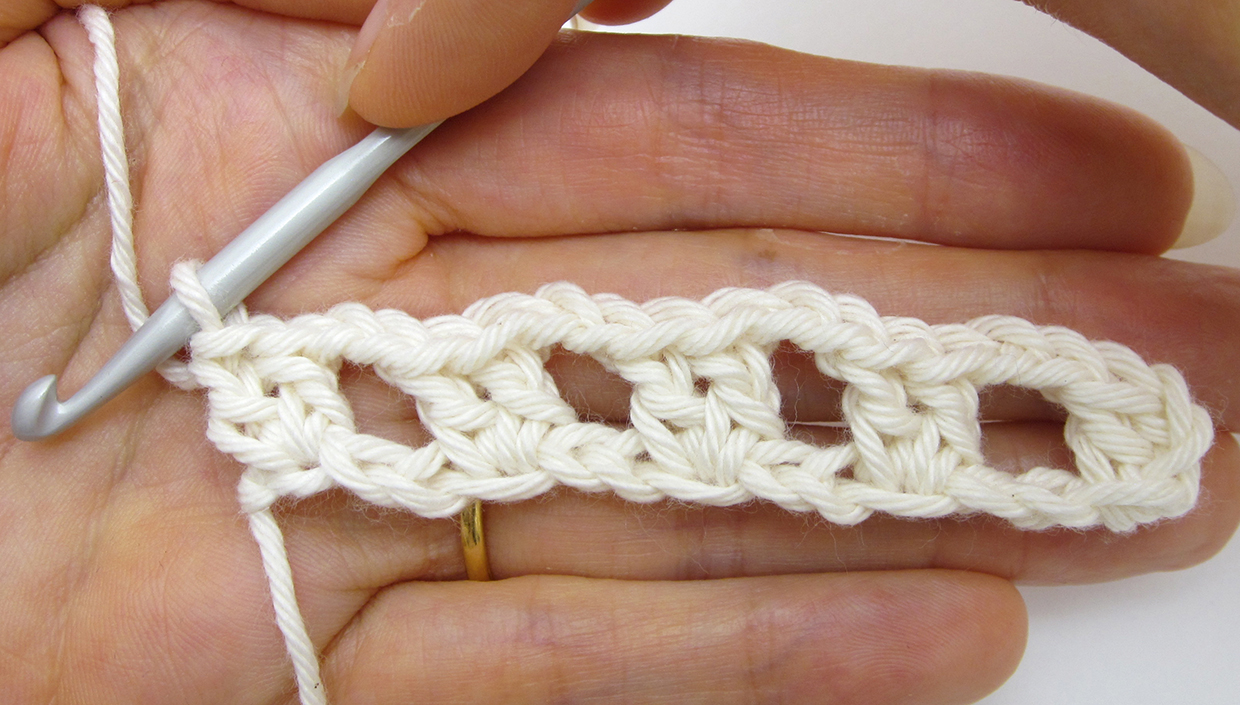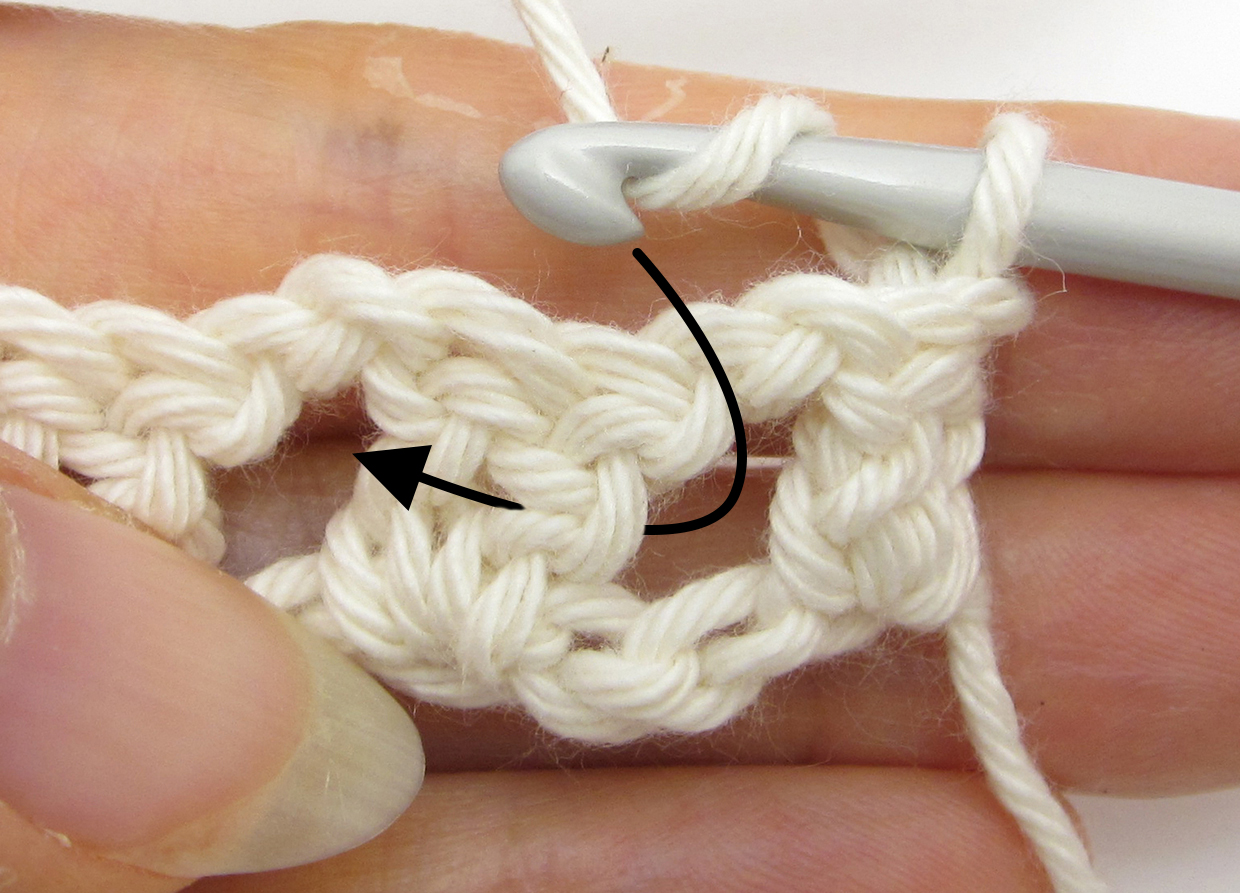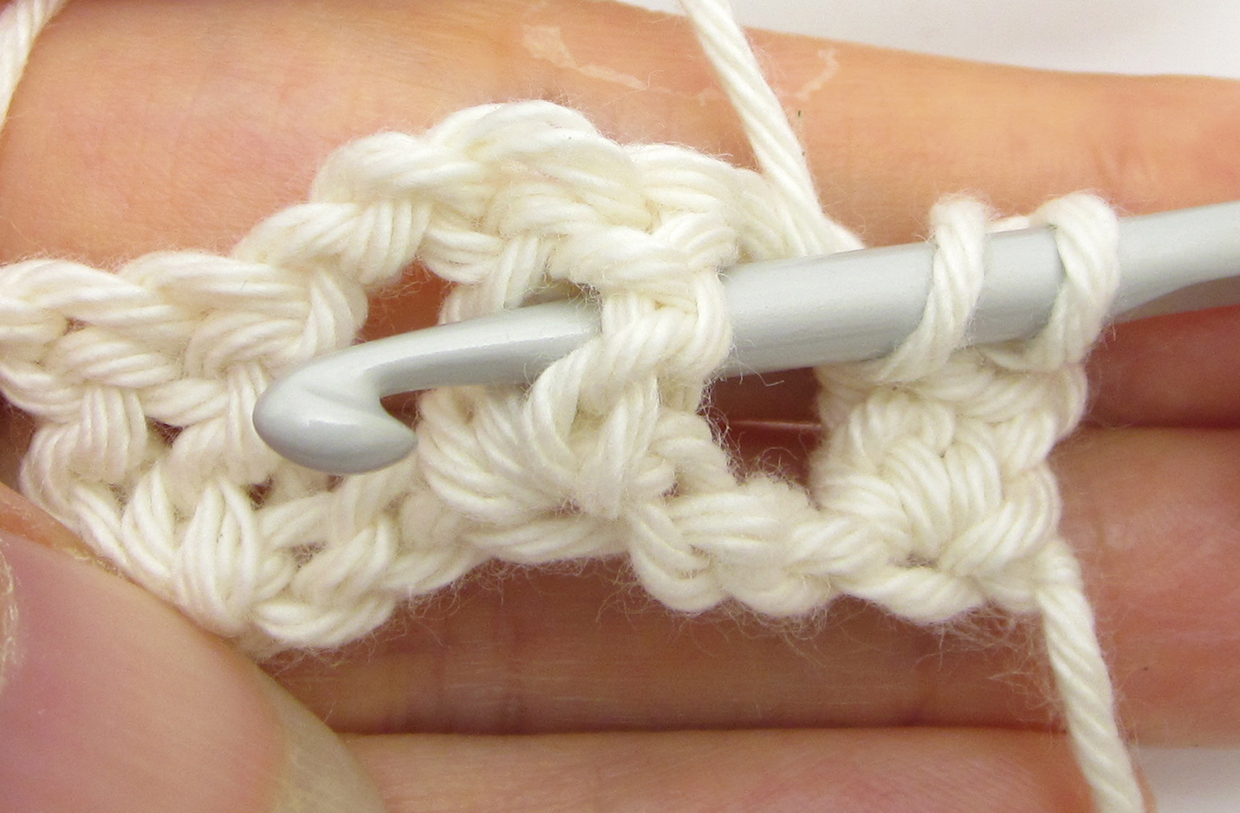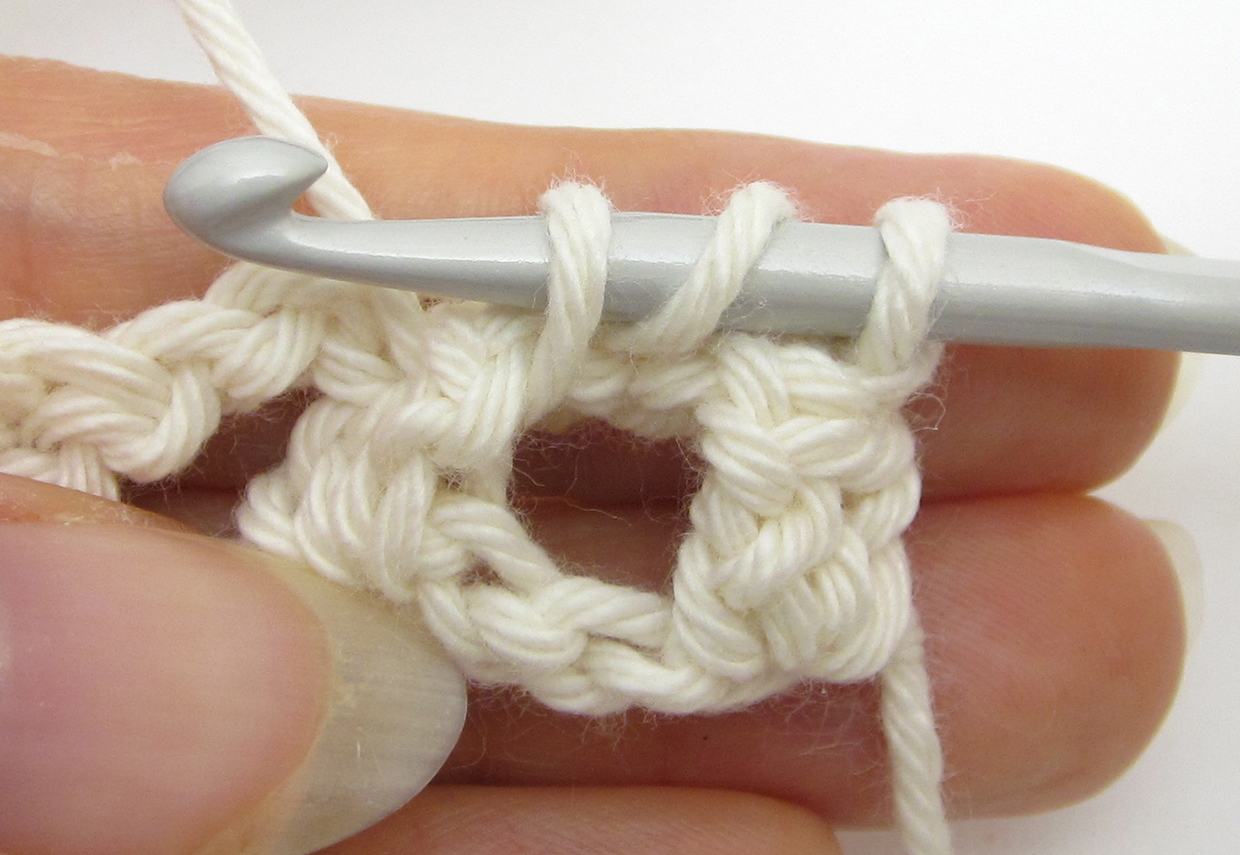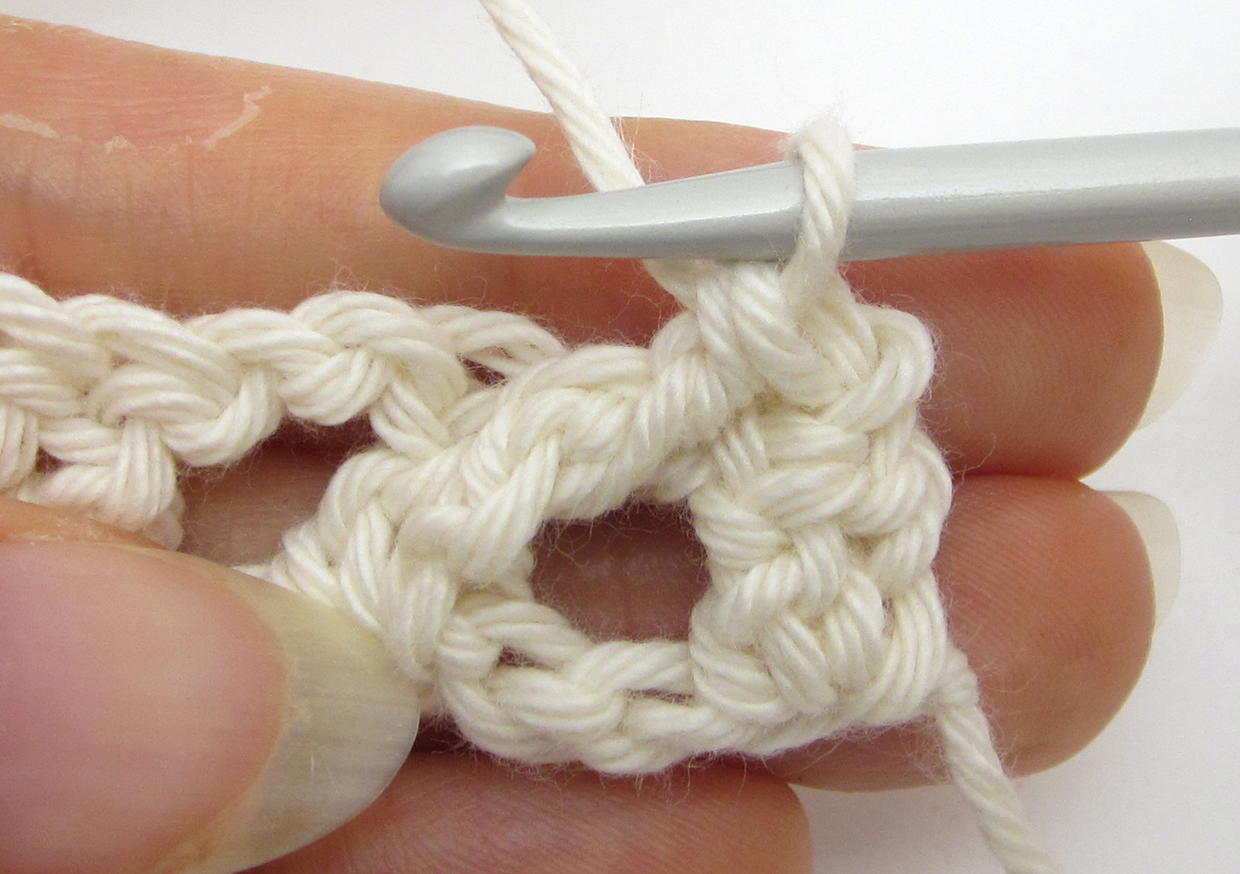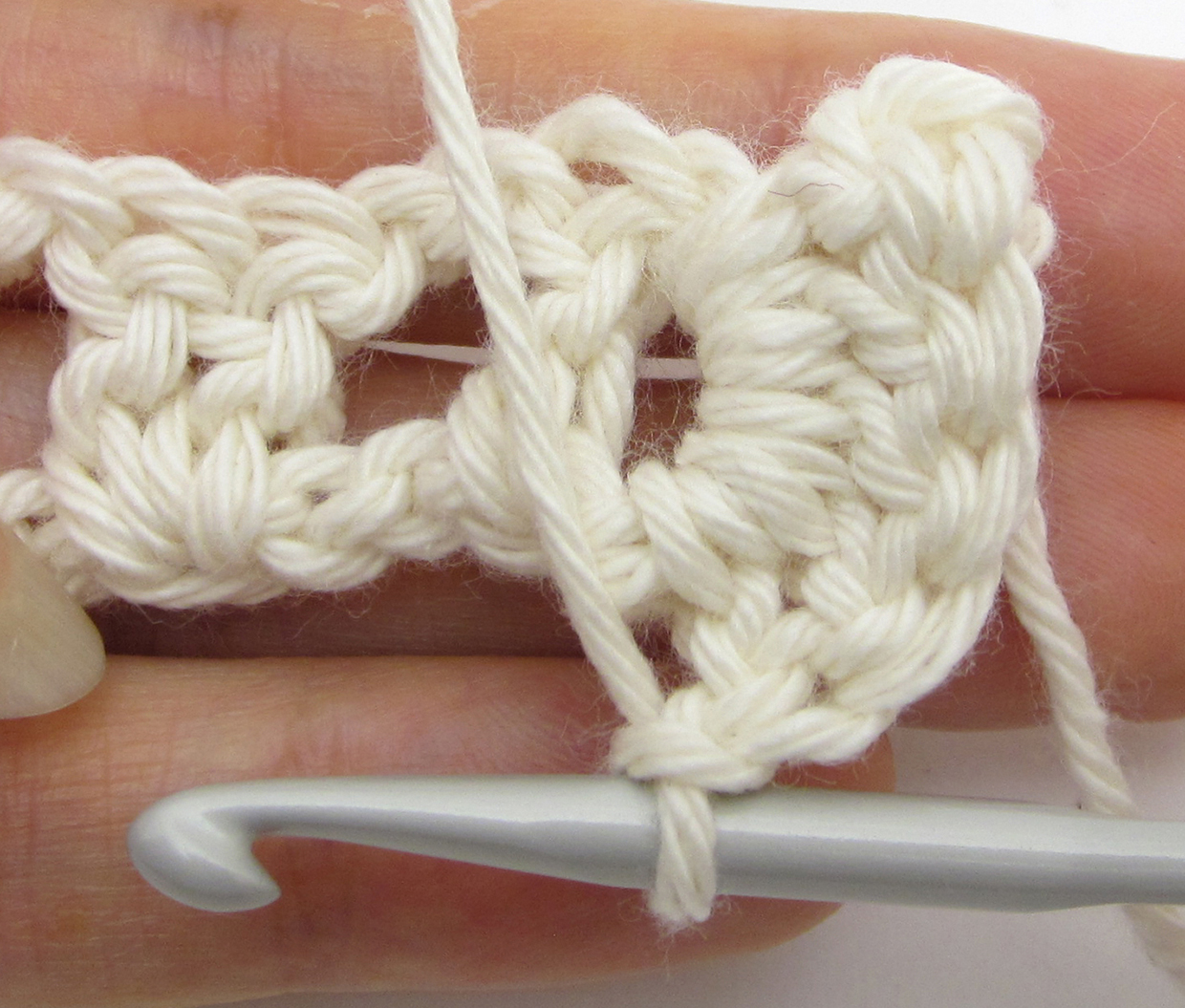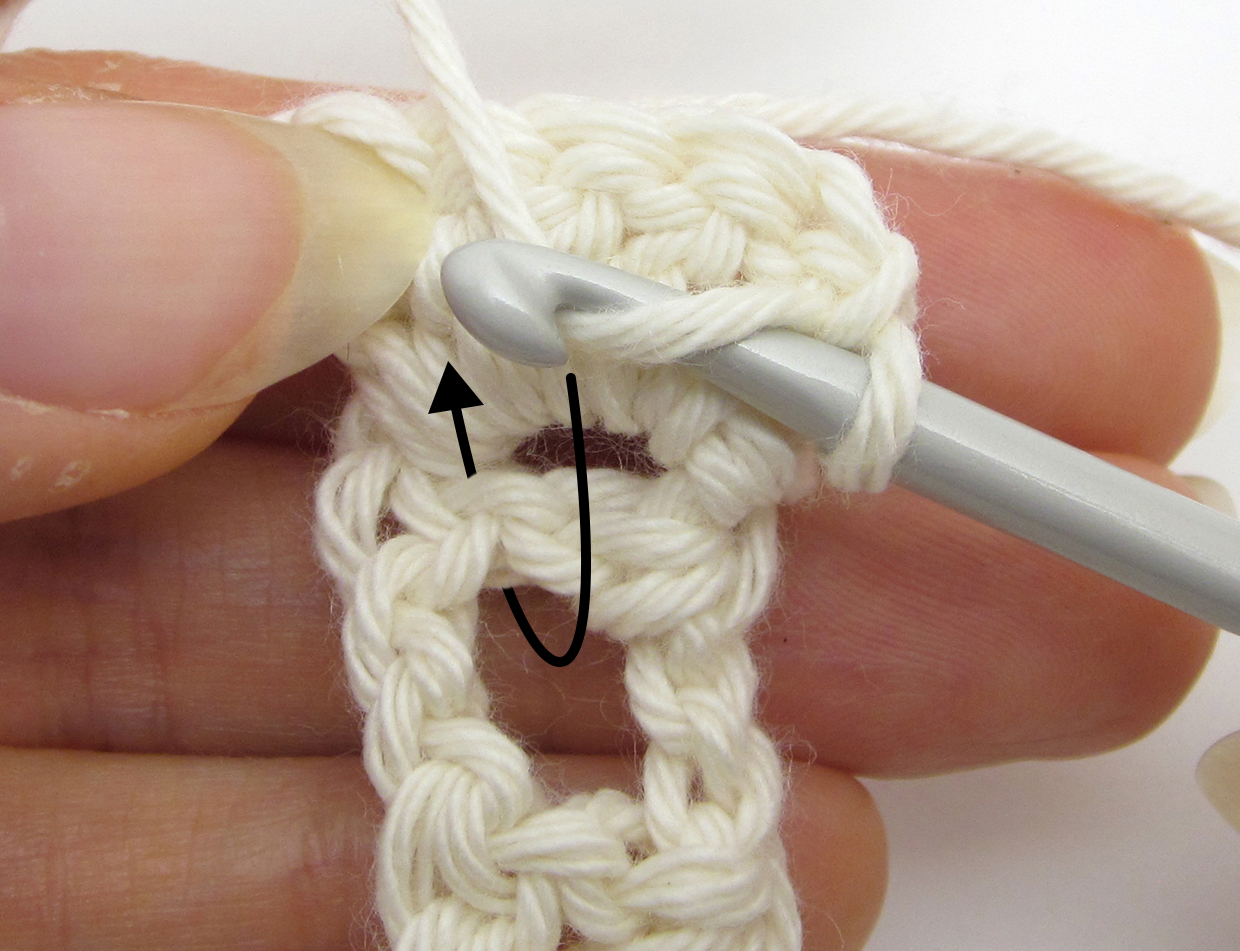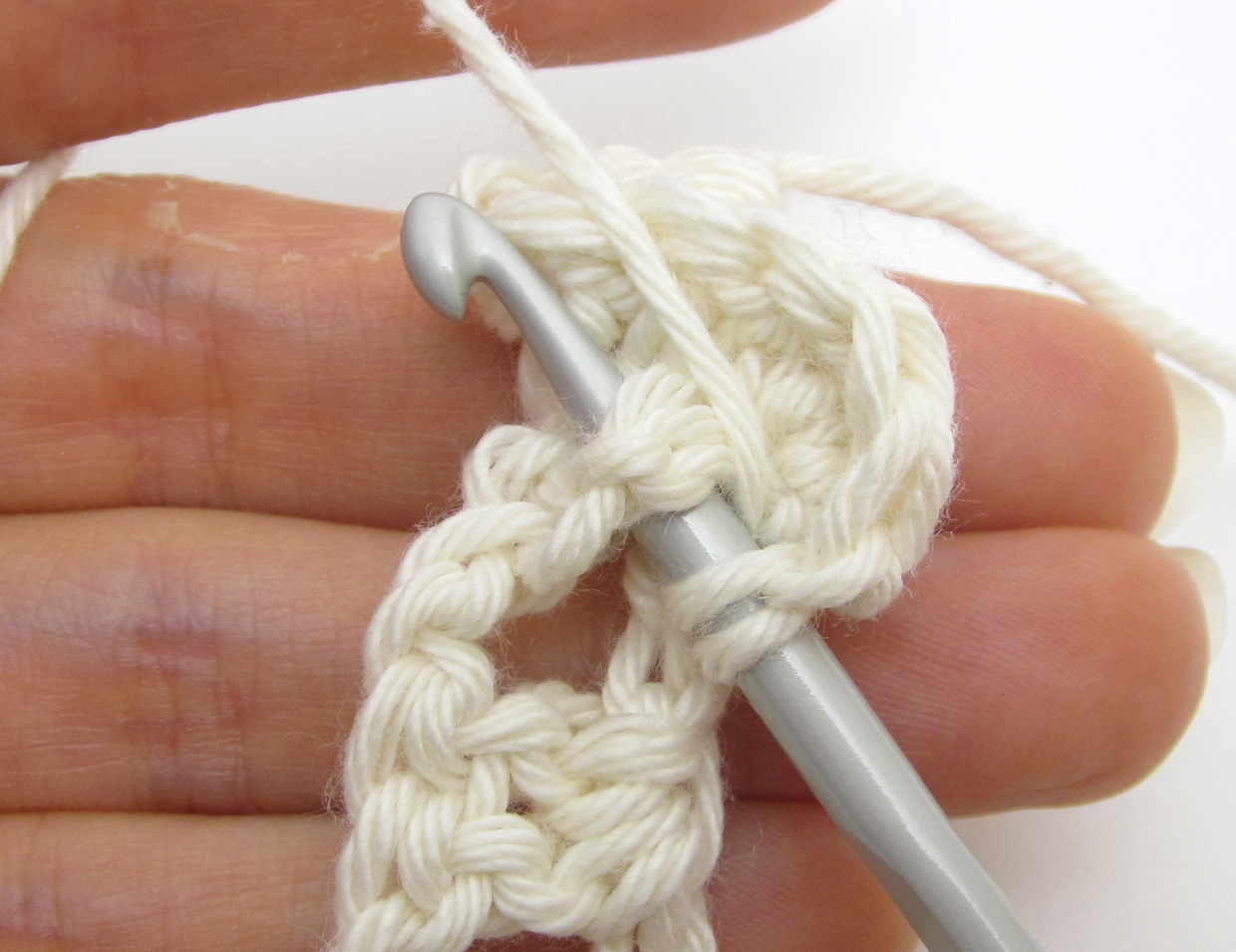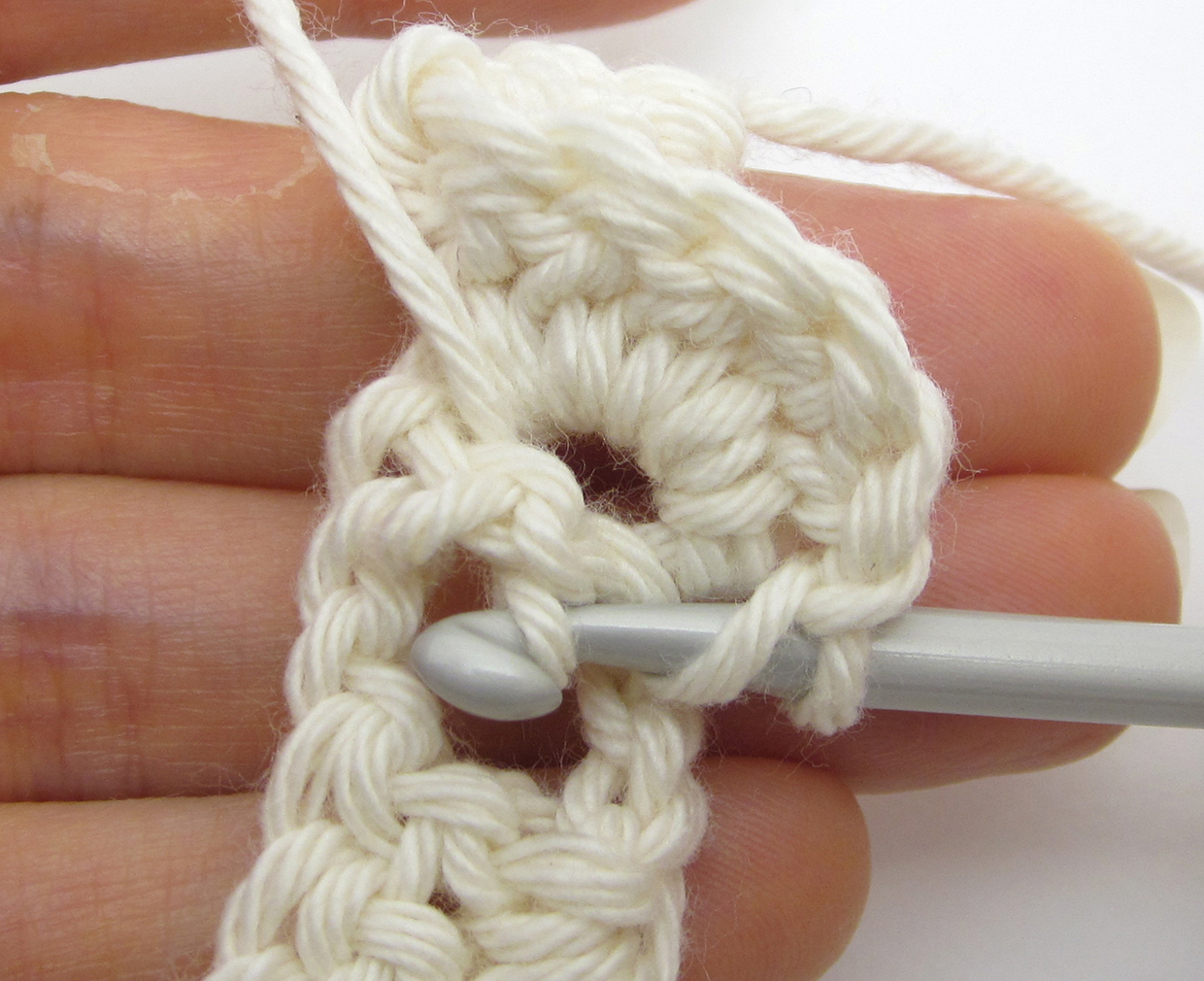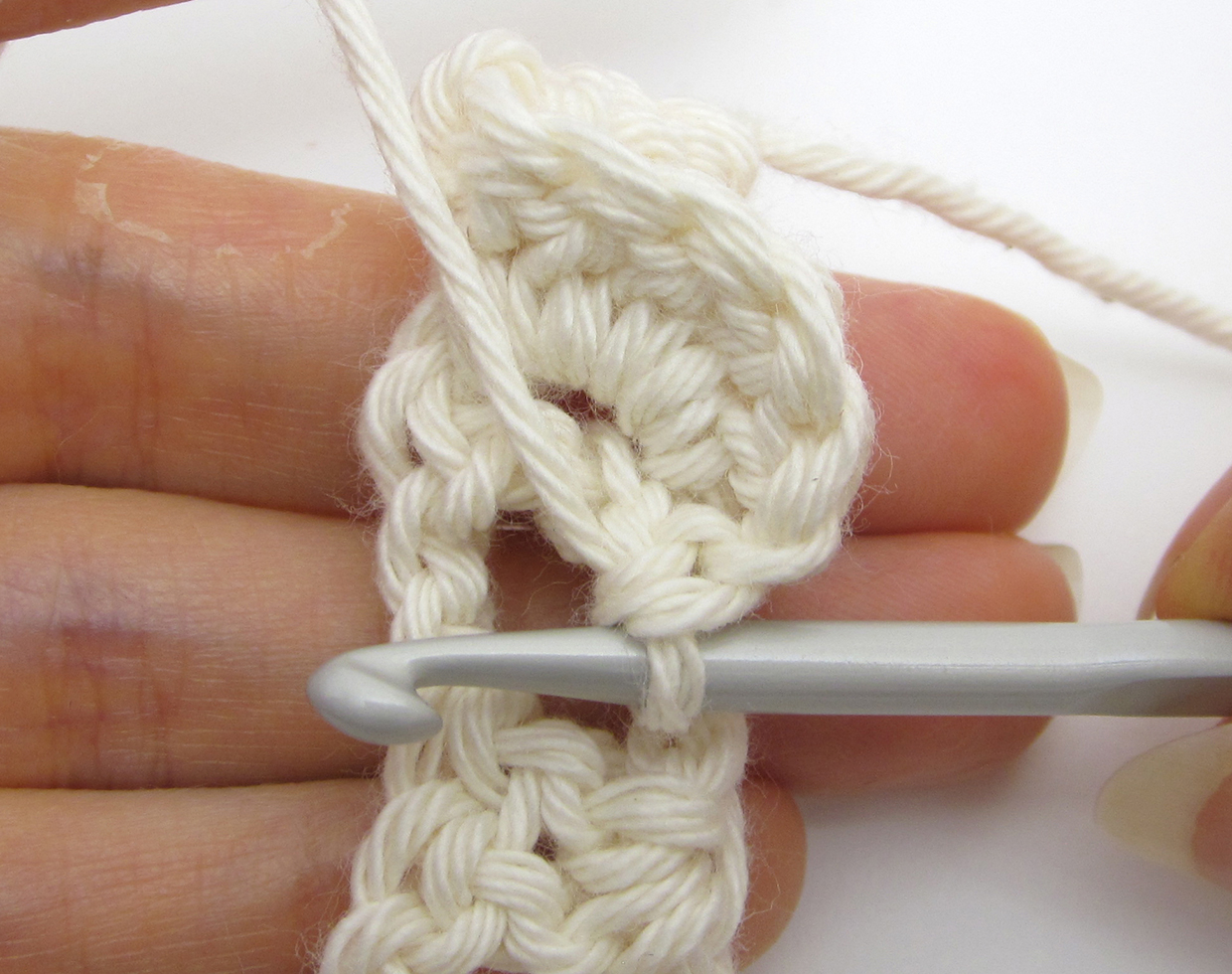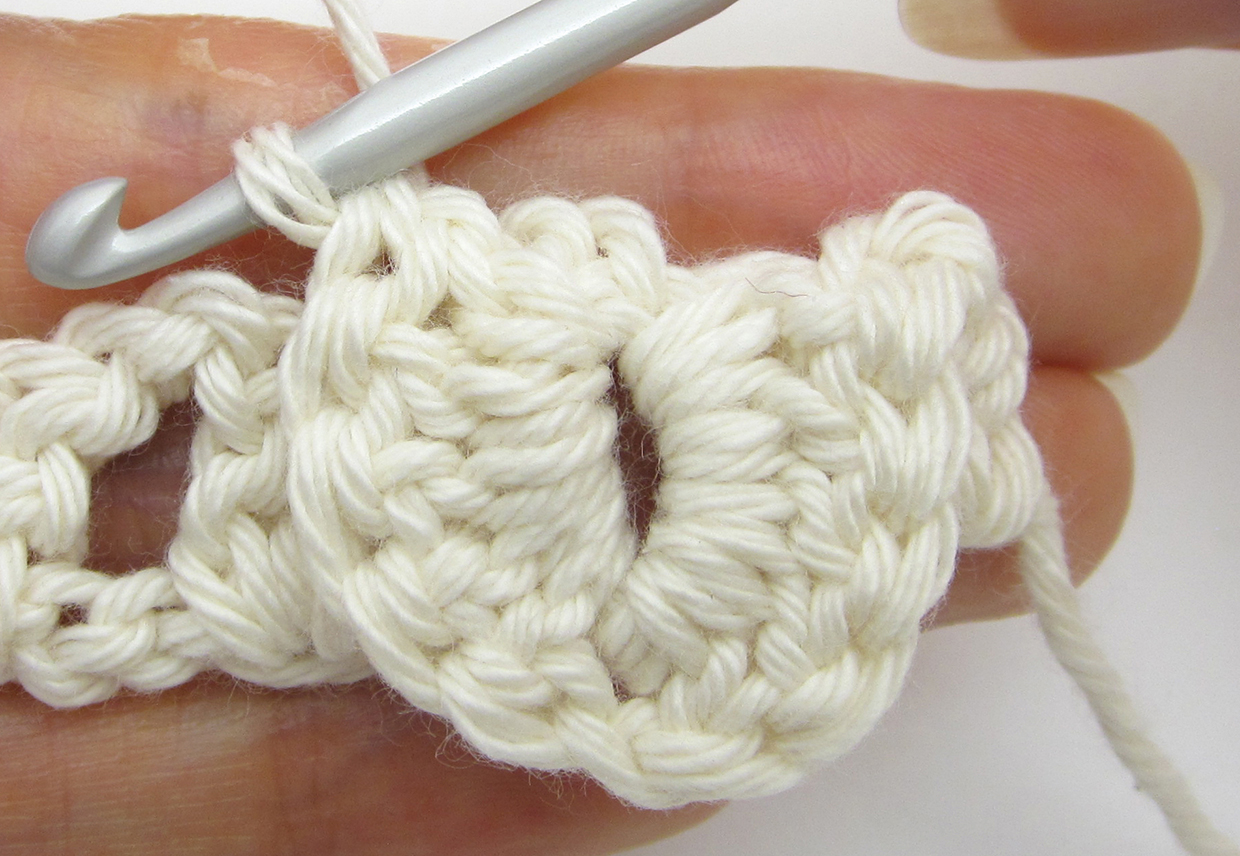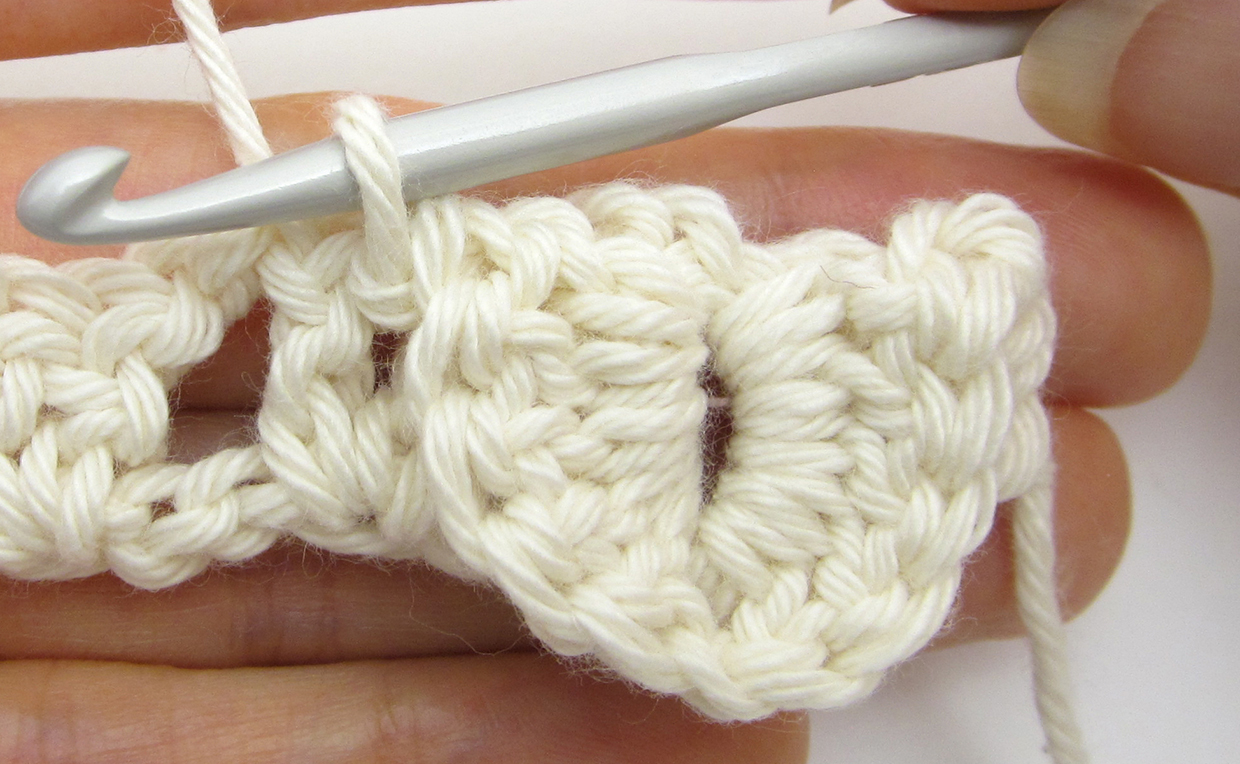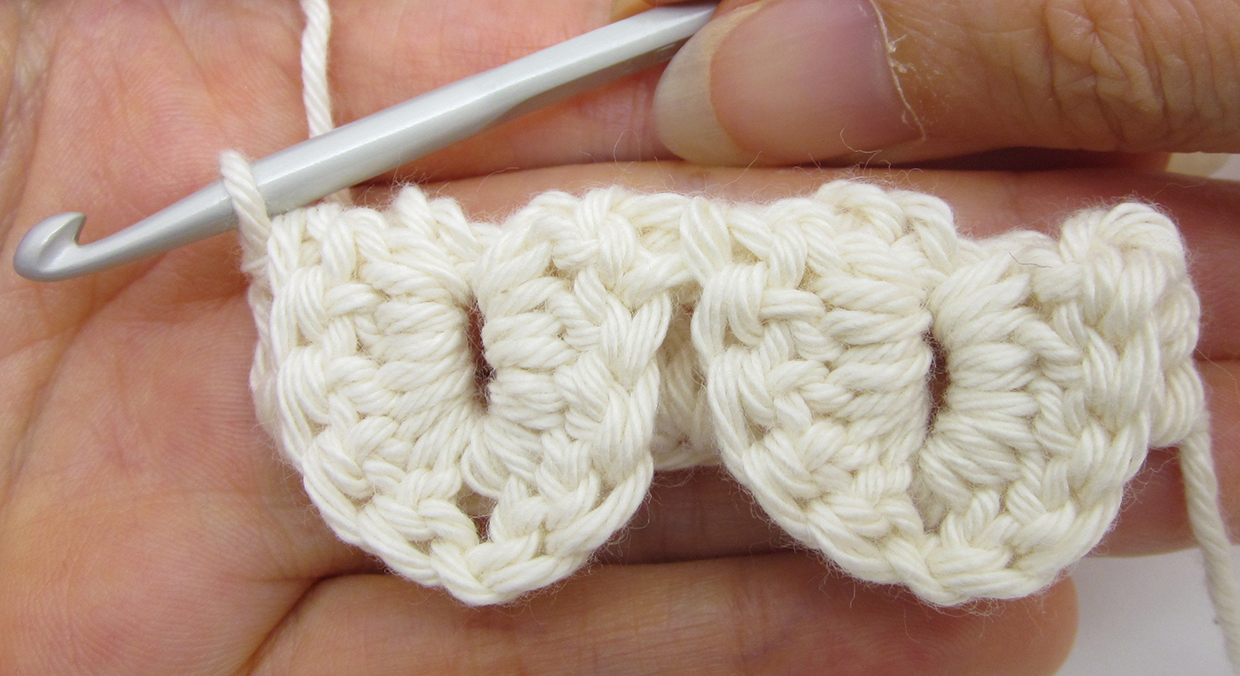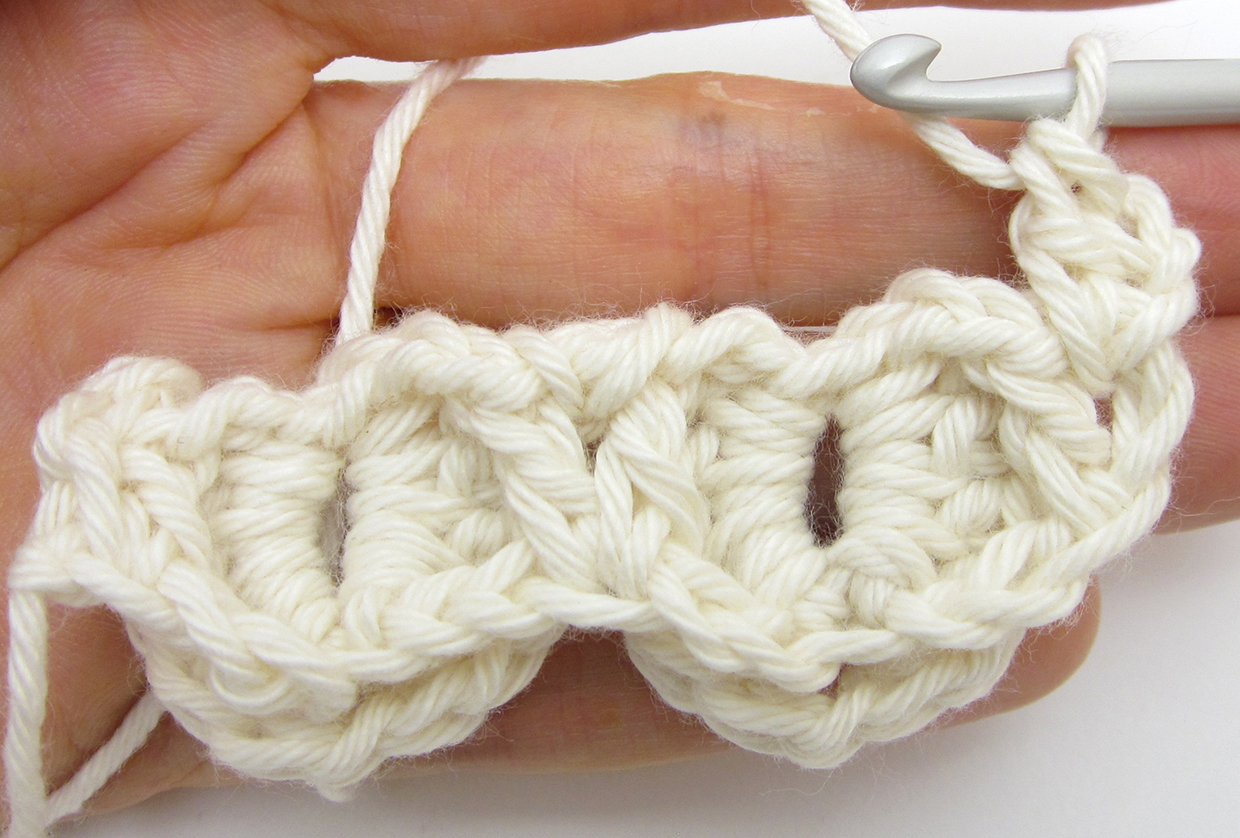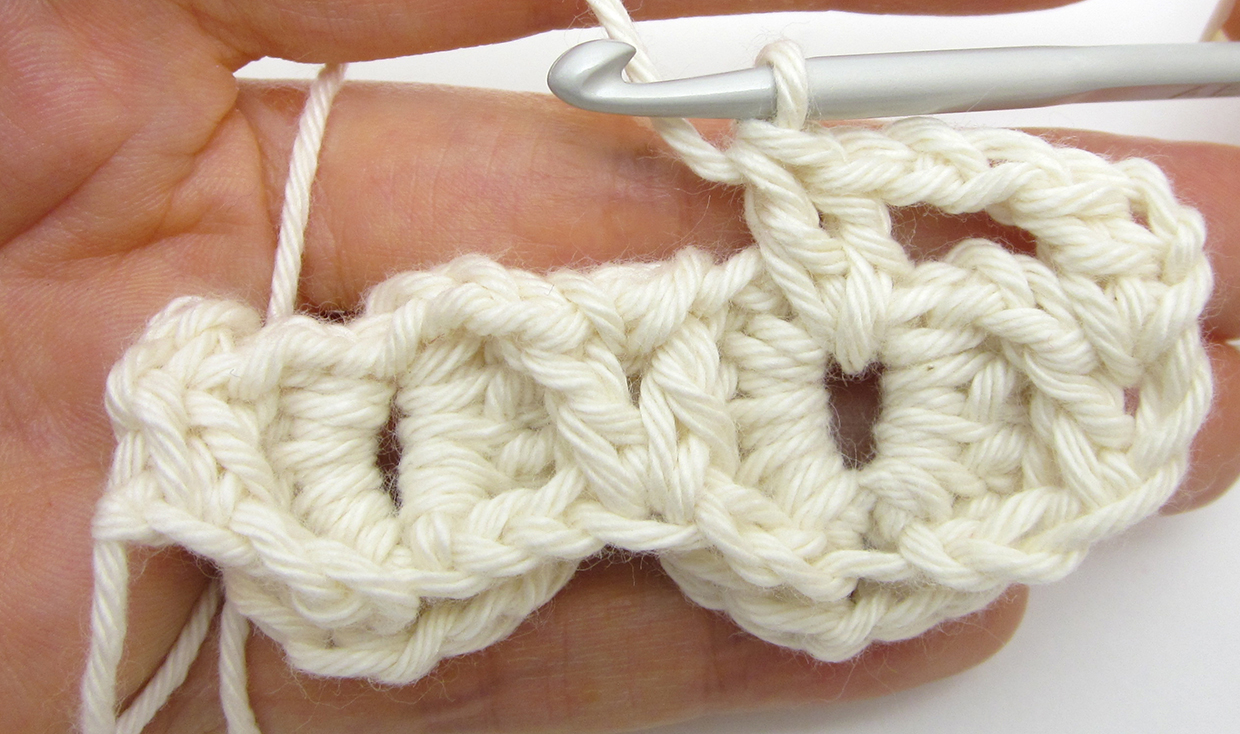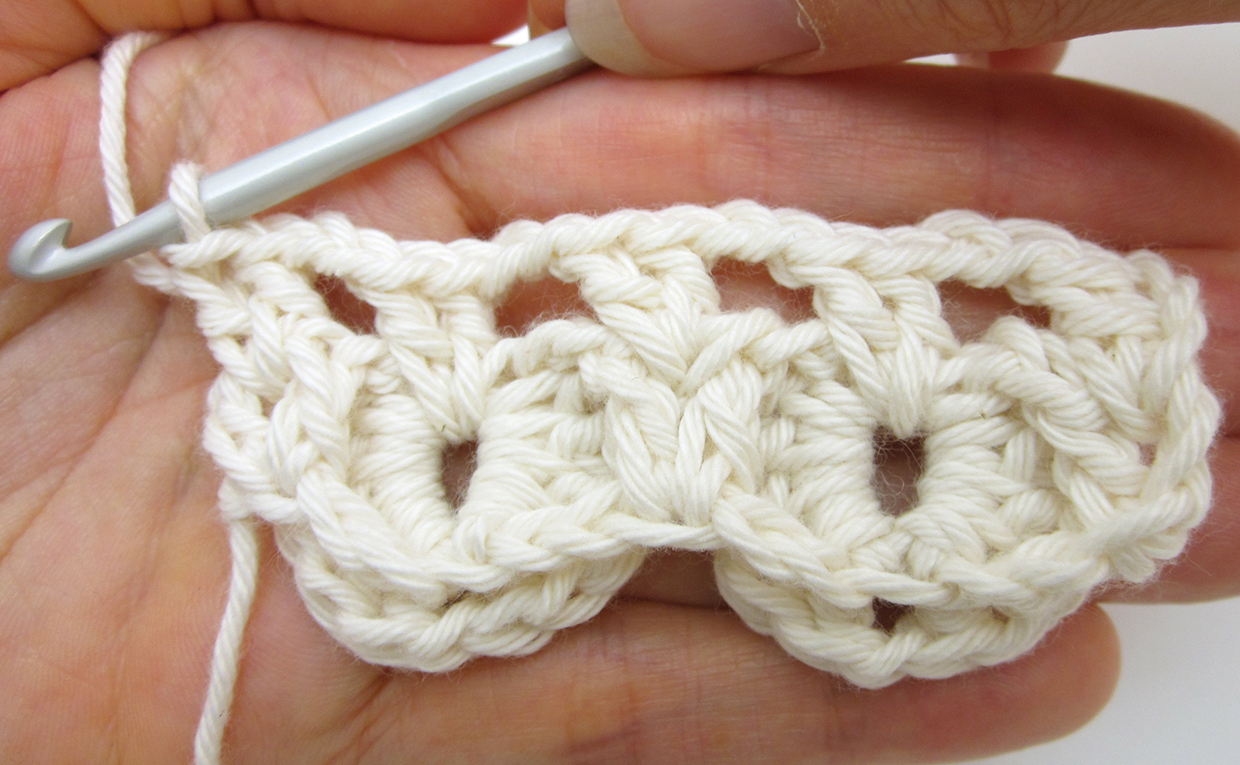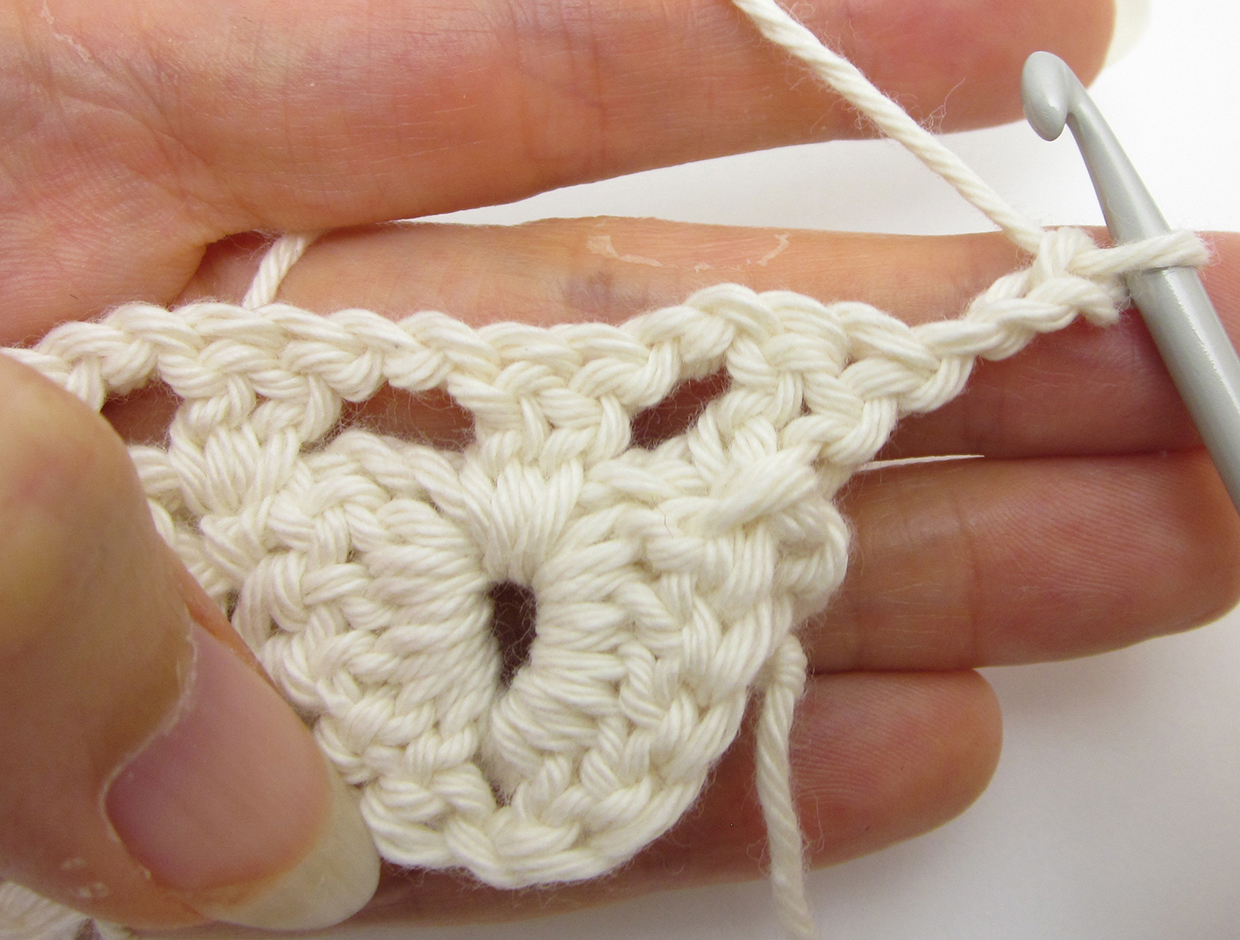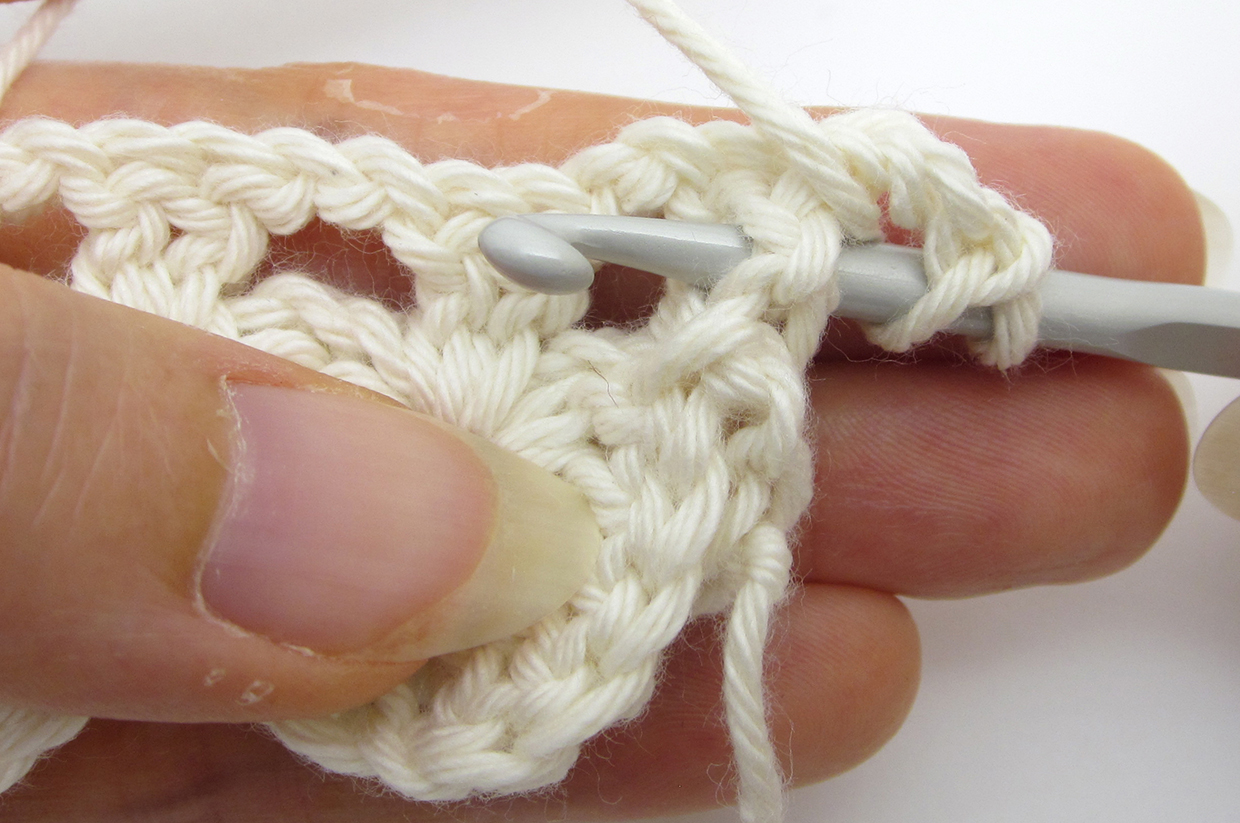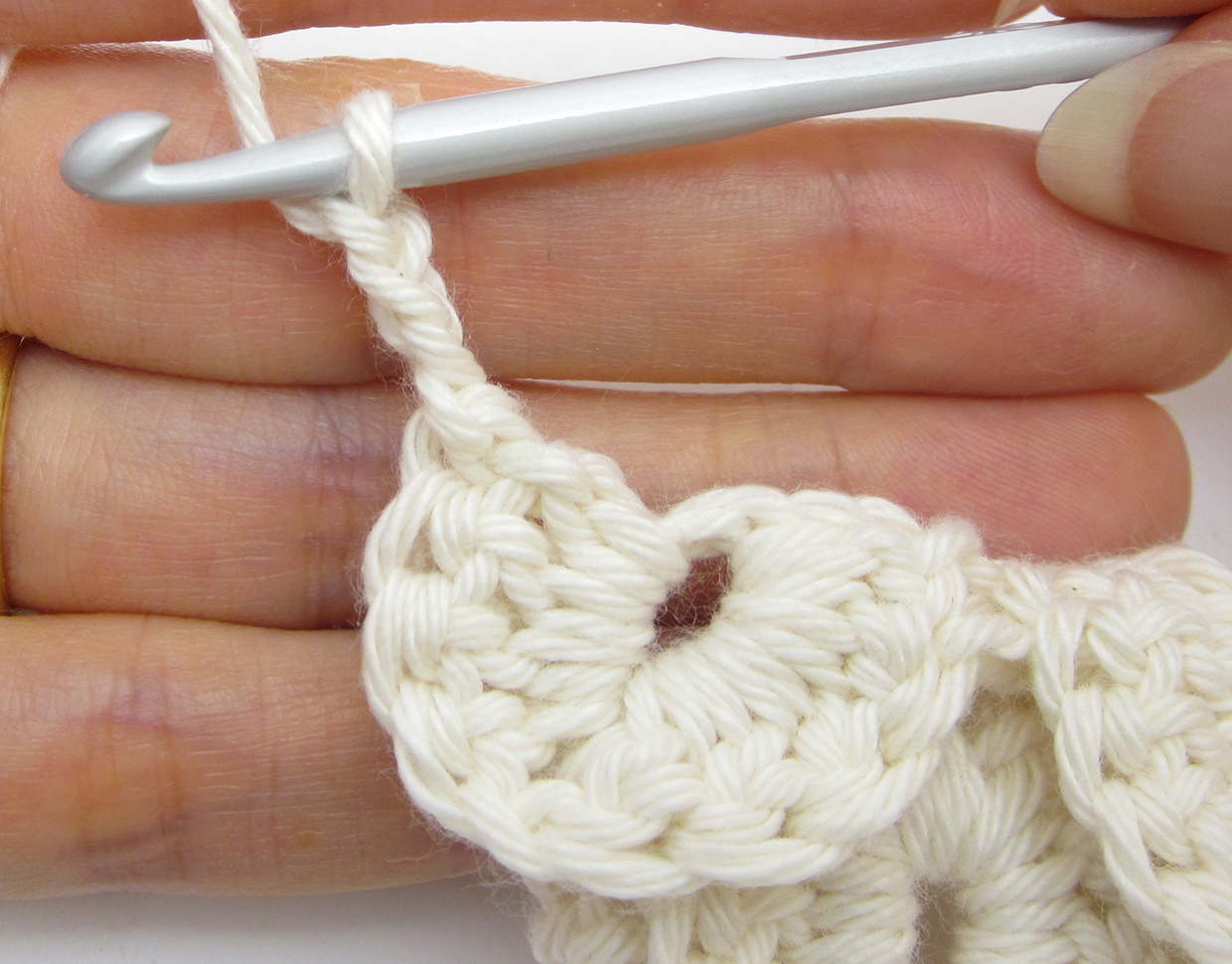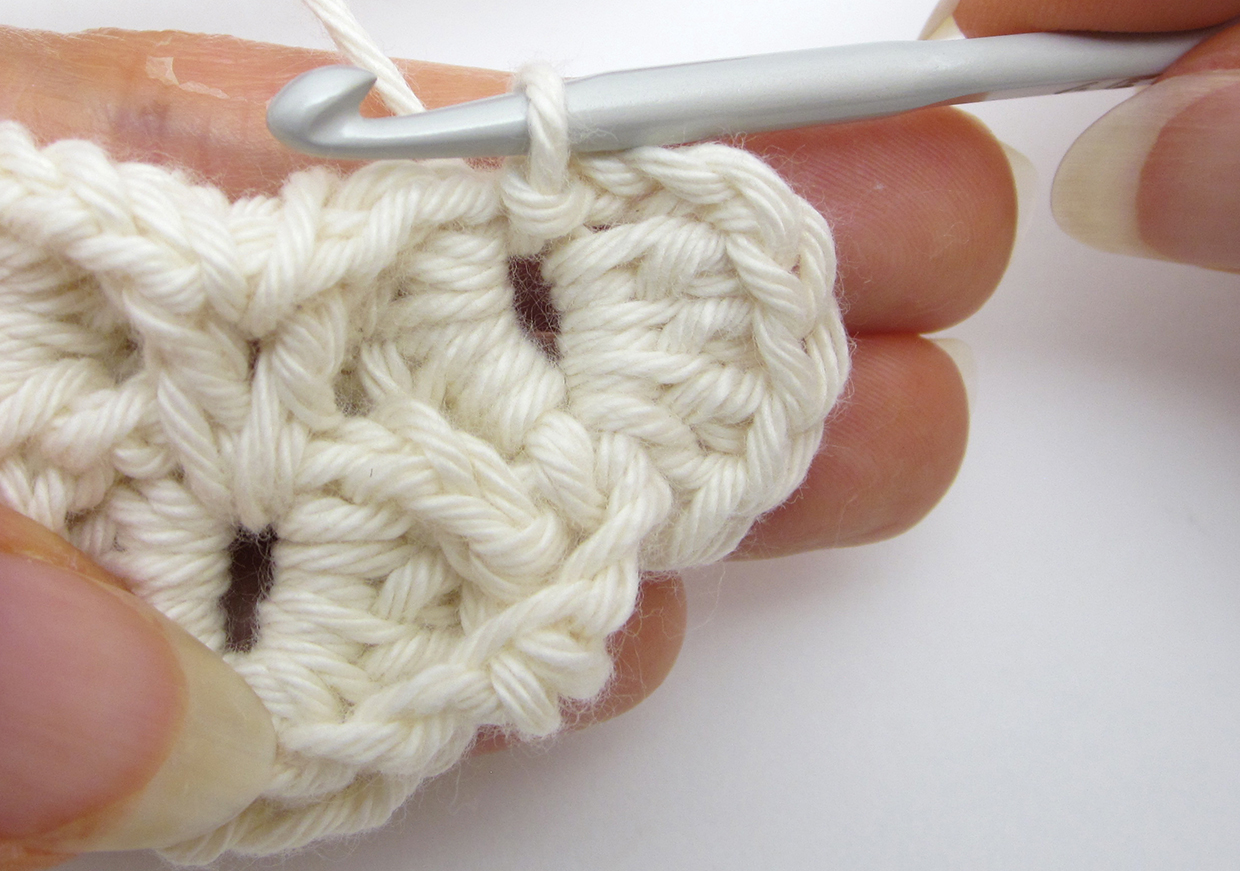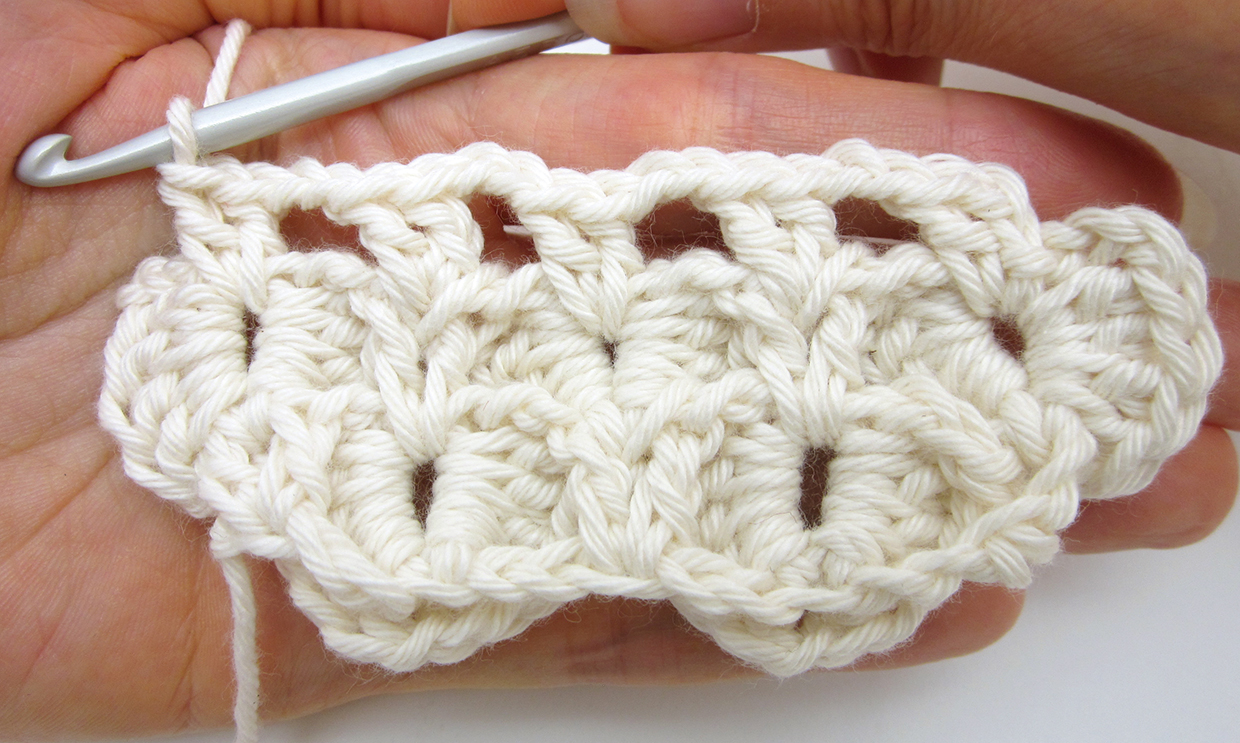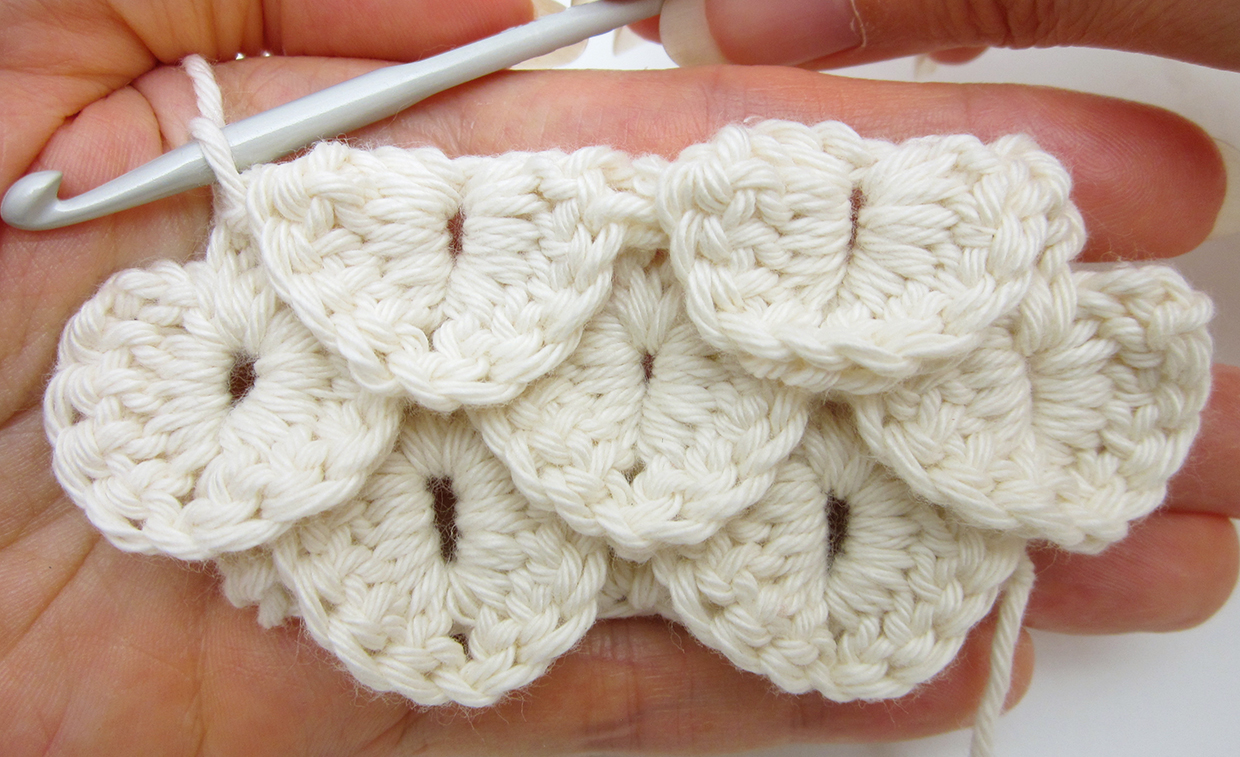The crochet crocodile stitch is a brilliant technique that forms petal shapes or ‘scales’ (hence the name). The scales are worked in overlapping layers to create a unique 3D effect. It’s surprisingly simple to master, using only chains and treble stitches; it’s where and how you work these stitches that creates the intriguing look.
Crocodile crochet stitch can be worked in either rows or rounds to create both flat and 3D fabrics, such as bag fronts or hats. The effect is especially cute on projects for children.
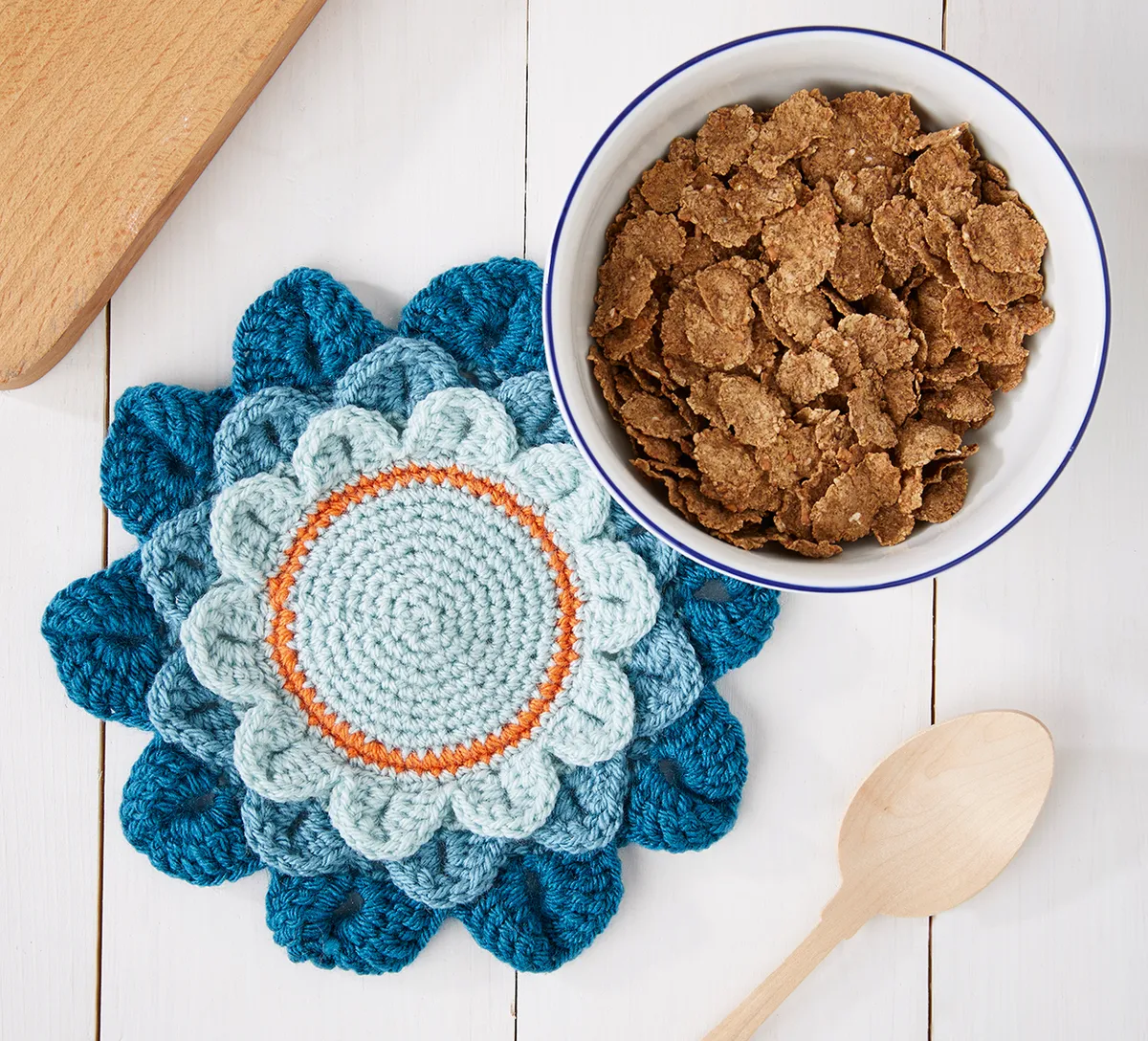
It’s a rather yarn-hungry technique, so it’s better for smaller makes that would benefit from having a tactile quality. There are lots of different ways to do crocodile stitch, and we’ll show you the main method of how to crochet crocodile stitch that should arm you with the skills you need to take on any crocodile stitch pattern.
To learn how to crochet crocodile stitch, we’ll work a small practice piece in rows. You can use any yarn and an appropriate size of hook. We’re using a DK yarn and a 4mm hook. You'll need to know how to do front post stitches in this tutorial, so if you need a little extra help with this you can check out our how to crochet post stitches tutorial.
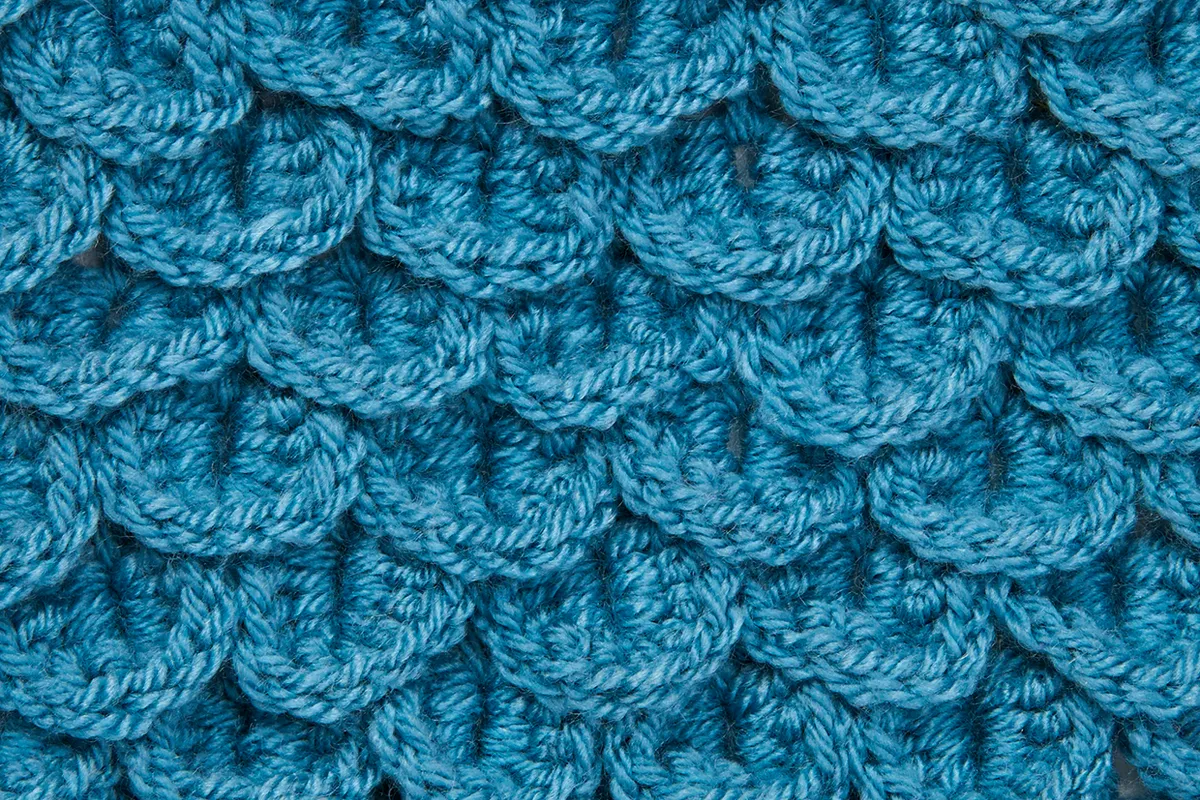
You can work crocodile stitch in numerous ways, but there are always two types of row worked alternately: base rows and scale rows. The base row creates a structure of stitches (usually trebles, although you can use almost any stitch) and chain spaces (usually one or two chains, but you can use more). The scale rows involve working stitches (usually trebles, although you can use almost any stitch) into the base row in a specific way to create the scale shapes.
